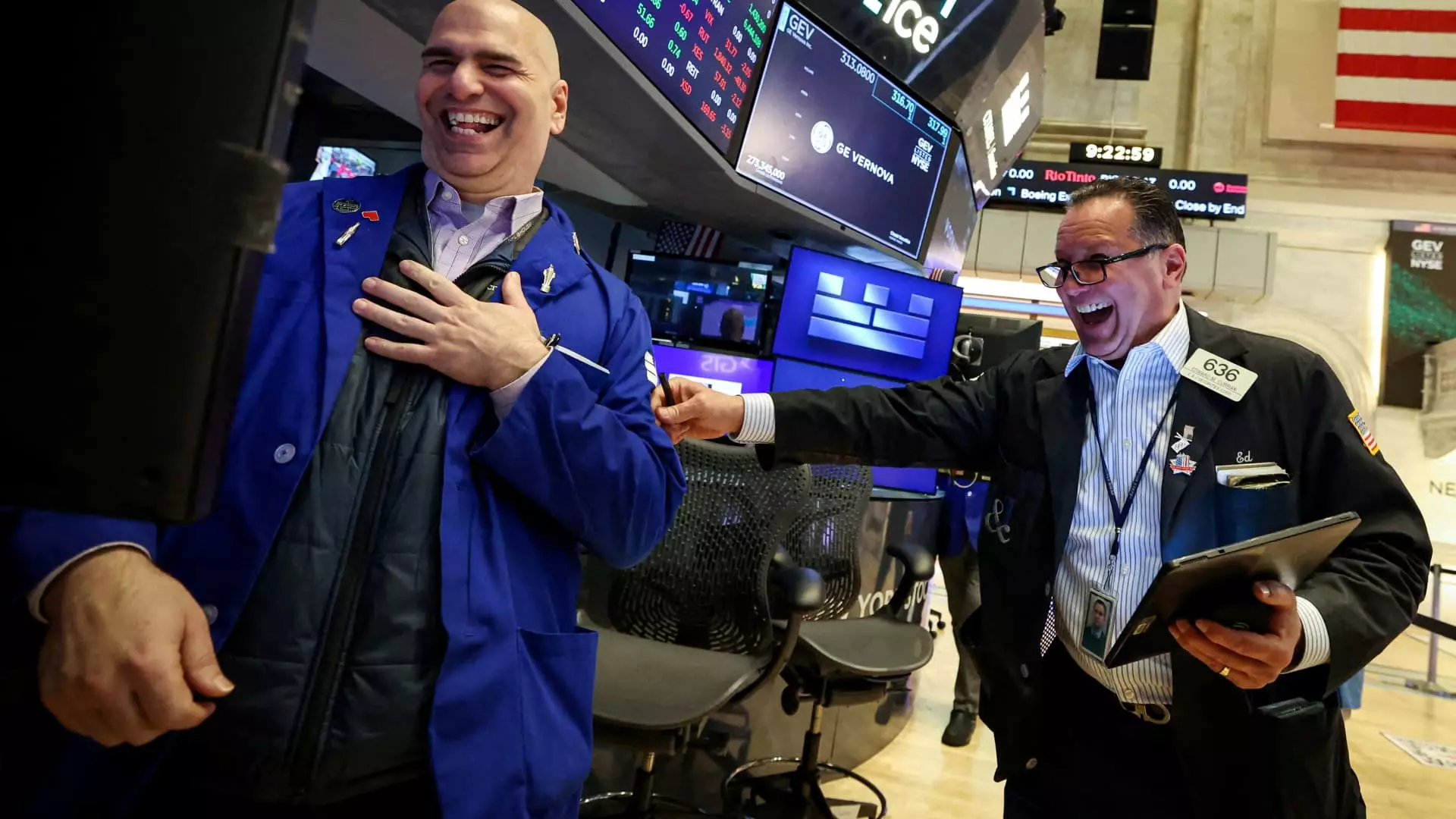The stock market recently experienced a remarkable two-day rally, largely fueled by the actions of short sellers scrambling to cover their positions. This phenomenon highlights a paradox: while these traders aim to profit from declining stock prices, their frantic buybacks can inadvertently trigger significant price surges. According to recent data from Goldman Sachs, the activity of hedge fund short sellers had intensified as they wagered heavily against individual stocks and broader macroeconomic indicators. The volatility spurred by President Donald Trump’s erratic tariff decisions drove these traders further into bearish territory, creating a breeding ground for unexpected market movements.
In essence, short sellers face a double-edged sword; they aim to capitalize on market downturns but often find themselves on the losing end when their predictions do not materialize. In such cases, a rapid upswing forces them to buy back shares at inflated prices, leading to what insiders call a “short squeeze.” This scenario implies that the recent market rally, while initially appearing as a genuine recovery, is underpinned by speculative movements rather than concrete fundamentals. The market may be enjoying a temporary burst of enthusiasm, but underlying anxieties persist.
The Role of Market Sentiment
Market sentiment, amplified by Trump’s fluctuating rhetoric on trade and Federal Reserve policies, plays an equally significant role. On one hand, signs of potential de-escalation in U.S.-China trade tensions triggered a surge in optimism among investors. Treasury Secretary Scott Bessent’s statement that “there is an opportunity for a big deal here” resonated with a market hungry for positive news. However, this enthusiasm must be scrutinized; it lacks the backing of solid agreements, which leaves investors clinging to fleeting hope.
As traders swiftly responded to these ambiguous signals, the stock market shot up significantly. The 30-stock Dow Jones Industrial Average soared over 1,000 points in a single day, breaking streaks of losses. Yet, upon deeper reflection, it becomes evident that much of the market’s excitement hinged on superficial remarks rather than substantial changes, raising questions about the sustainability of such a rise.
Furthermore, Trump’s conflicting views about Federal Reserve Chairman Jerome Powell added another layer of complexity. One moment, the president expressed dissatisfaction with Powell; the next, he reassured markets that he had no intentions of dismissing him. These abrupt shifts in policy direction create uncertainty, which investors often interpret as both a risk and an opportunity. Yet, is this rollercoaster of sentiment a foundation for long-term growth or merely a shimmering illusion?
The Illusion of Confidence
While the rapid rise in stock indices might inspire confidence, it would be prudent to approach these gains with caution. Many market specialists, including Goldman’s John Flood, noted that while hedge funds were quick to cover their shorts, they weren’t necessarily transitioning into long positions. This reality emphasizes a fundamental truth: the current market bounce is lackluster in conviction and could resemble a bubble inflated by frenetic buying behavior rather than rooted in lasting value.
Flood’s observations suggest that a true and sustainable rally would require traditional investors—the long-term players—to step in and support shares they consider fairly valued. The absence of this foundational support indicates that the recent spike may not have the robustness required to maintain prolonged growth. Instead, investors are left to ponder whether this excitement will fade as quickly as it surged, leading to a sharp correction for a market that seems tethered to transient stimuli rather than substantial economic improvement.
The Path Forward
Political and economic factors will play crucial roles in determining the stock market’s trajectory in the coming weeks. Investors must remain aware of the ongoing geopolitical tensions, the pervasive influence of trade negotiations, and the psychological effects resulting from unpredictable political narratives. As the market continues to oscillate between periods of exuberance and uncertainty, an informed approach that prioritizes genuine data over sensational headlines will be essential.
Cycles of volatility are part and parcel of stock market behavior, and understanding these dynamics can empower investors to navigate the labyrinth of market fluctuations decisively. The recent rally may have momentarily distracted from deeper economic realities; thus, both retail and institutional traders should critically assess their strategies, ensuring that they are aligned with proven fundamentals rather than speculation. The path ahead is fraught with uncertainty, but it is also ripe with opportunities for those who remain vigilant and discerning.

